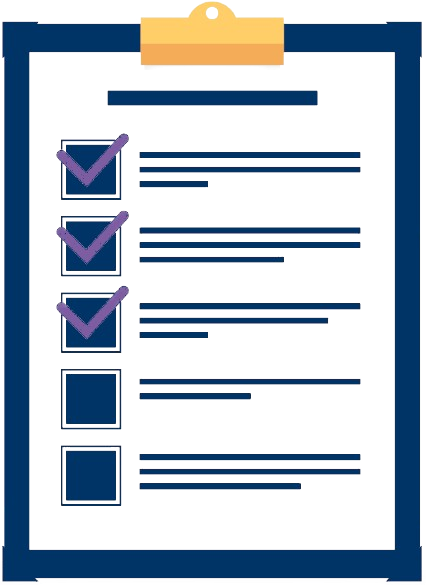Suggestions based on the Question and Answer that you are currently viewing
Everly Corporation acquires a coal mine at a cost of $400,000. Intangible development costs total $100,000. After extraction has occurred, Everly must restore the property (estimated fair value of the obligation is $80,000), after which it can be sold for $160,000. Everly estimates that 4,000 tons of coal can be extracted. If 700 tons are extracted the first year, prepare the journal entry to record depletion.
A vertical boring mill is used to bore the inside diameter of a large batch of tube-shaped parts. The diameter = 28.0 in and the length of the bore = 14.0 in. Current cutting conditions are: speed = 200 ft/min, feed = 0.015 in/rev, and depth = 0.125 in. The parameters of the Taylor equation for the cutting tool in the operation are: n = 0.23 and C = 850 (ft/min). Tool change time = 3.0 min, and tooling cost = $3.50 per cutting edge. The time required to load and unload the parts = 12.0 min, and the cost of machine time on this boring mill = $42.00/hr. Management has decreed that the production rate must be increased by 25%. Is that possible? Assume that feed must remain unchanged in order to achieve the required surface finish. What is the current production rate and the maximum possible production rate for this job?
Define and distinguish the two terms heat transfer factor and melting factor in welding.
What are the arguments for giving separate accounting recognition to the conversion feature of debentures?
Under what circumstances would a higher rate of investment lead to a higher rate of economic growth?
Explain why financial institutions are highly exposed to systemic risk during a financial crisis. (LO4)
. In 2024, Jack is single two children, ages 10 and 12. Jack works full time and earns an annual salary of $195,000 as a consultant. Jack files as a head of household and does not itemize his deductions. In the fall of this year, he was recently offered a position with another firm that would pay him an additional $45,000.
Richardson Company is contemplating the establishment of a share-based compensation plan to provide long-run incentives for its top management. However, members of the compensation committee of the board of directors have voiced some concerns about adopting these plans, based on news accountsrelated to a recent accounting standard in this area. They would like you to conduct some research on this recent standard so they can be better informed about the accounting for these plans. Instructions Access the IFRS authoritative literature at the IASB website (http://eifrs.iasb.org/). (Click on the IFRS tab and then register for free eIFRS access if necessary.) When you have accessed the documents, you can use the search tool in your Internet browser to respond to the following questions. (Provide paragraph citations.) (a) Identify the authoritative literature that addresses the accounting for share-based payment compensation plans. (b) Briefly discuss the objectives for the accounting for share-based compensation. What is the role of fair value measurement? (c) The Richardson Company board is also considering an employee share-purchase plan, but the Board does not want to record expense related to the plan. What are the IFRS requirements for the accounting for an employee share-purchase plan?
Explain the nature of cryptocurrencies and their applications. (LO3)
How might the volatility of an economy affect the growth of potential output?
The financial statements of Marks and Spencer plc (M&S) are available at the book’s companion website or can be accessed at http://annualreport.marksandspencer.com/_assets/downloads/ Marks-and-Spencer-Annual-report-and-financial-statements-2012.pdf. Instructions Refer to M&S’s financial statements and the accompanying notes to answer the following questions. (a) Under M&S’s share-based compensation plan, share options are granted annually to key managers and directors. (1) How many options were granted during 2012 under the plan? (2) How many options were exercisable at 31 March 2012? (3) How many options were exercised in 2012, and what was the average price of those exercised? (4) How many years from the grant date do the options expire? (5) To what accounts are the proceeds from these option exercises credited? (6) What was the number of outstanding options at 31 March 2012, and at what average exercise price? (b) What number of diluted weighted-average shares outstanding was used by M&S in computing earnings per share for 2012 and 2011? What was M&S’s diluted earnings per share in 2012 and 2011? (c) What other share-based compensation plans does M&S have?
Instructions Go to the book’s companion website and use information found there to answer the following questions related to The Coca-Cola Company and PepsiCo, Inc. (a) What employee stock-option compensation plans are offered by Coca-Cola and PepsiCo? (b) How many options are outstanding at year-end 2011 for both Coca-Cola and PepsiCo? (c) How many options were granted by Coca-Cola and PepsiCo to officers and employees during 2011? (d) How many options were exercised during 2011? (e) What was the average exercise price for Coca-Cola and PepsiCo employees during 2011? (f) What are the weighted-average number of shares used by Coca-Cola and PepsiCo in 2011, 2010, and 2009 to compute diluted earnings per share? (g) What was the diluted net income per share for Coca-Cola and PepsiCo for 2011, 2010, and 2009?
Youngman Corporation has temporary differences at December 31, 2014, that result in the following deferred taxes. Deferred tax asset $24,000 Deferred tax liability $69,000 Indicate how these balances would be presented in Youngman’s December 31, 2014, statement of financial position.
On January 1, 2013, Locke Company, a small machine-tool manufacturer, acquired for $1,260,000 a piece of new industrial equipment. The new equipment had a useful life of 5 years, and the salvage value was estimated to be $60,000. Locke estimates that the new equipment can produce 12,000 machine tools in its first year. It estimates that production will decline by 1,000 units per year over the remaining useful life of the equipment. The following depreciation methods may be used: (1) straight-line, (2) double-declining-balance, (3) sum-of-the-years’-digits, and (4) units-of-output. For tax purposes, the class life is 7 years. Use the MACRS tables for computing depreciation. Instructions (a) Which depreciation method would maximize net income for financial statement reporting for the 3-year period ending December 31, 2015? Prepare a schedule showing the amount of accumulated depreciation at December 31, 2015, under the method selected. Ignore present value, income tax, and deferred income tax considerations. (b) Which depreciation method (MACRS or optional straight-line) would minimize net income for income tax reporting for the 3-year period ending December 31, 2015? Determine the amount of accumulated depreciation at December 31, 2015. Ignore present value considerations.
Define (a) a contingency and (b) a contingent liability.
Does this mean that Keynesians would advocate using supply-side policies only at times of full employment?
Ramirez Company has a held-for-collection investment in the 6%, 20-year bonds of Soto Company. The investment was originally purchased for $1,200,000 in 2013. Early in 2014, Ramirez recorded an impairment of $300,000 on the Soto investment, due to Soto’s financial distress. In 2015, Soto returned toprofitability and the Soto investment was no longer impaired. What entry does Ramirez make in 2015 under (a) GAAP and (b) IFRS?
Soundgarden Company sold 200 color laser copiers in 2014 for $4,000 apiece, together with a one-year warranty. Maintenance on each copier during the warranty period averages $330. Instructions (a) Prepare entries to record the sale of the copiers and the related warranty costs, assuming that the accrual method is used. Actual warranty costs incurred in 2014 were $17,000. (b) On the basis of the data above, prepare the appropriate entries, assuming that the cash-basis method is used.
Hayes Company sold 10,000 shares of Kenyon Co. common stock for $27.50 per share, incurring $1,770 in brokerage commissions. These securities were classified as trading and originally cost $260,000. Prepare the entry to record the sale of these securities.
How is a pull system distinguished from a push system in production and inventory control?
John Fillmore’s lifelong dream is to own his own fishing boat to use in his retirement. John has recently come into an inheritance of $400,000. He estimates that the boat he wants will cost $300,000 when he retires in 5 years. How much of his inheritance must he invest at an annual rate of 12% (compounded annually) to buy the boat at retirement?
How do organisations identify the costs of a cost object?
Performance evaluation and sustainability balanced scorecard Brewster House is a not-for-profit shelter for the homeless. Lately funding has decreased, but the demand for overnight shelter has increased. In cold weather, clients are turned away because the shelter is full. The director believes that the current capacity could be used more efficiently. No one has taken time to analyse the physical layout of the shelter and current use of space. Several rooms are used for storage that could probably be used for temporary housing. The stored boxes need to be sorted and moved. Volunteers currently assign beds and manage overnight housing, because the director is busy with fundraising. Volunteers work just a few shifts each week, so no one has taken responsibility for coordinating improvements in the services offered. The director is considering whether to implement a balanced scorecard to focus the attention of all volunteers on areas that need improvement. Brewster receives funds from several sources, including a set annual budget from the local council and direct donations from supporters. The director develops a budget each year based on expected funding but she cannot precisely predict donations. The budget is used primarily to justify funding requests submitted to the council. The director has asked a group of accounting students from the local university to evaluate operations and recommend whether the entity should develop a balanced scorecard. She cannot give bonuses based on the measures, but she wonders whether developing and monitoring performance measures would encourage the volunteers to increase the use of capacity. She also wonders whether some information from the balanced scorecard could be used to show donors the effectiveness of the operations in achieving social goals. Required (a) Describe how the balanced scorecard could be developed to help demonstrate the social sustainability goals. (b) Provide details of sustainability-related measures for each scorecard perspective you have designed for Brewster House. (c) What issues would Brewster House management have to overcome to ensure a change in practice? (LO4 and 5)
If price regulation results in lower profits, will this always imply lower investment? How might a government incentivise innovation in a regulated industry?
What Motivates You?
The benefits of buying with AnswerDone:

Access to High-Quality Documents
Our platform features a wide range of meticulously curated documents, from solved assignments and research papers to detailed study guides. Each document is reviewed to ensure it meets our high standards, giving you access to reliable and high-quality resources.

Easy and Secure Transactions
We prioritize your security. Our platform uses advanced encryption technology to protect your personal and financial information. Buying with AnswerDone means you can make transactions with confidence, knowing that your data is secure

Instant Access
Once you make a purchase, you’ll have immediate access to your documents. No waiting periods or delays—just instant delivery of the resources you need to succeed.
